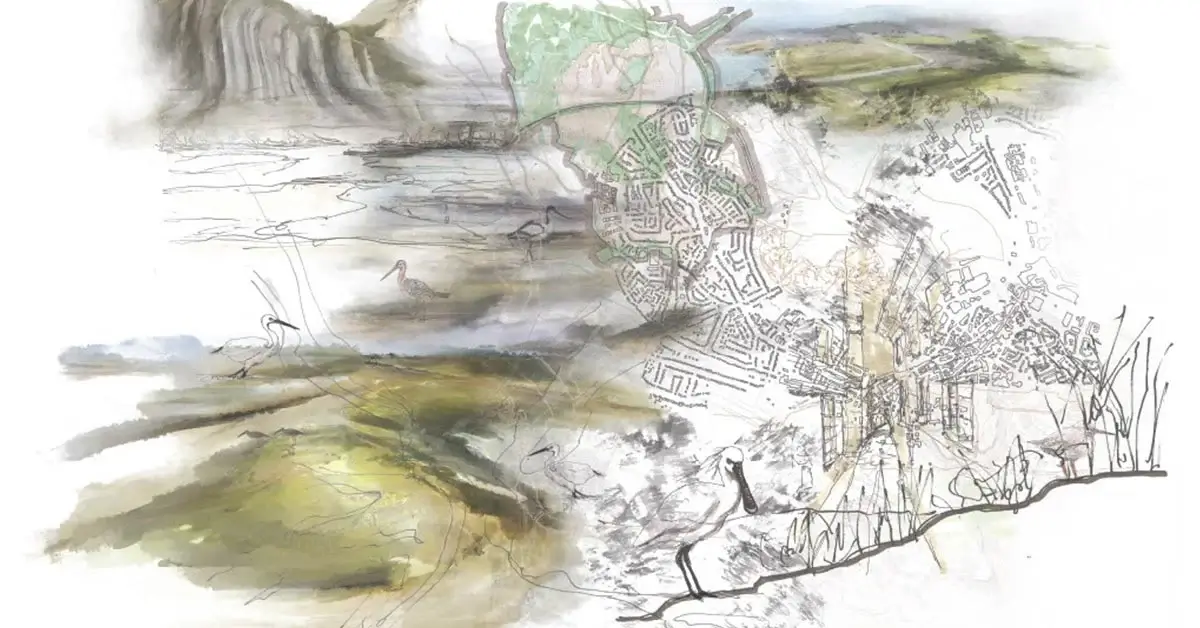
Landscape architecture has long been considered a profession which maximises the use and effect of land resources to benefit people, the environment and the economy. Now, landscape architects are being called upon to help tackle the growing health crisis. So, how can landscape architecture boost our health and wellbeing – and what is a ‘healthy landscape’?
Countries around the world are struggling to find ways to counter the latest health crisis: a global pandemic, increasing mental health issues, the impact of ageing and effect of long-term chronic diseases, such as heart disease, strokes, diabetes and cancer. The answer, in part, may lie in the creation of more healthy landscapes, a tried and tested solution that has been used for centuries.
What is a healthy landscape?
The UK’s Landscape Institute (LI), the chartered body for the landscape profession, describes ‘healthy landscapes’ as places designed to promote good health and wellbeing. They constitute any form of landscape – rural, urban, civic, open and protected spaces – which through their considered design and planning improve people’s physical and mental health.
Throughout history, there’s an acceptance of the benefits on our health and mindset of our surroundings, particularly access to clean air, sunshine, plants and other forms of nature. For example, within the monasteries of the Middle Ages, you’d find spaces which came to be known as ‘healing gardens’ – places for contemplation and meditation, as well as growing food and herbs.
Later the Victorian urban parks movement was established to provide city dwellers access to fresh air and relaxation; why British Prime Minister William Pitt the Elder dubbed them “the lungs of London”. The landscape also became more important as the space for social interaction, which enhances place attachment and social cohesion. Both factors contribute to mental well-being.
Why are healthy landscapes important?
Evidence has shown that our environment can have a direct impact our health. For example, a 2003 Dutch study of over 10,000 adults and children found that those living near green spaces were in better health, specifically they had lower rates of 15 different health conditions, particularly depression and anxiety.
In 2011, a Norwegian study of 278 coronary and pulmonary patients found improvements in physical and mental health when in a room with an unobstructed bedroom view to natural surroundings.
Landscape Institute President Sue Illman believes: “All those concerned in creating healthy places – public health professionals, planners and landscape architects – need to recognise landscape as an asset that has enormous potential to improve our health and wellbeing.”
The Institute has identified five principles that capture the positive links between landscape and health:
- Healthy places improve air, water and soil quality, incorporating measures that help us adapt to, and where possible mitigate, climate change.
- Healthy places help overcome health inequalities and can promote healthy lifestyles.
- Healthy places make people feel comfortable and at ease, increasing social interaction and reducing anti-social behaviour, isolation and stress.
- Healthy places optimise opportunities for working, learning and development
- Healthy places are restorative, uplifting and healing for both physical and mental health conditions.
What are some examples of healthy landscapes?
The Landscape Institute’s position statement on Public Health and Landscape identifies a number of different examples of healthy places:
- The Greenlink Motherwell, Scotland: Changing lives with a 7km cycle path from Strathclyde Country Park to Motherwell Town Centre. This is a social regeneration project, which runs through neighbourhoods defined as being among the 15 per cent most deprived in Scotland, serving people with low life expectancy and poor mental health (17 per cent are on health benefits).
- Liverpool Natural Choices Programme, The Mersey Forest, Liverpool: The programme provided £300,000 of funding for projects that use local green space to improve health and wellbeing. The projects addressed a range of issues at the grassroots level – from teaching people with learning disabilities to grow fresh fruit and vegetables, to creating community gardens for vulnerable people to enjoy, to protecting and maintaining local woodlands.
- Dudley Healthy Towns Programme, West Midlands: By improving the physical structure and connectivity of Dudley’s parks, the town has transformed five local parks into ‘family healthy hubs’ to encourage people to adopt a healthier lifestyle and help reduce levels of childhood obesity in the borough.
- Dalston Eastern Curve Garden, London: Designed around a spacious wooden garden pavilion, revitalising public space, the Eastern Curve includes space for wildlife-friendly planting, as well as raised beds in which local residents can grow vegetables and herbs.
How can you learn more about healthy landscapes?
On Arts University Bournemouth’s (AUB) part-time, online MA Landscape Architecture Studies, you’ll develop the specialist skills and knowledge to create healthy, sustainable, inspirational environments that complement our ecosystem.
This two-year master’s will familiarise you with the history and evolution of landscape architecture, together with key themes and contemporary practices, including healthy landscapes, cradle to cradle design, and green-blue infrastructure planning.
The Resilient Placemaking: Landscapes for Economic, Social and Environmental Wellbeing module focuses on the ways in which landscape can help tackle sources of economic, social and environmental stress, thereby supporting positive physical and mental health. You’ll also learn how diversity, environmental justice and inclusivity relate to you and your practice, as well as their wider social context.
Do you have the imagination and foresight to create landscapes that enrich our lives? Learn more about AUB Online’s MA Landscape Architecture Studies:
Featured image credit: Kira Bennett
Related posts
The difference between architecture and landscape architecture
Discover the key differences between architecture and landscape architecture, as well as the...
Read the storyWhat’s green & blue infrastructure planning?
Discover the power of green and blue infrastructure planning to create sustainable, resilient, and...
Read the storyWhat is urban design?
Uncover the importance of urban design and its transformative power in creating vibrant,...
Read the storyStart your creative journey here.
Want to chat or ask a few questions? Fill this in and we’ll give you a call back.
